Best enduro helmets – top-rated head protection for enduro and gravity MTB riding and racing
The best enduro helmets offer good ventilation and high levels of protection for riding fast on technical, DH-graded MTB terrain
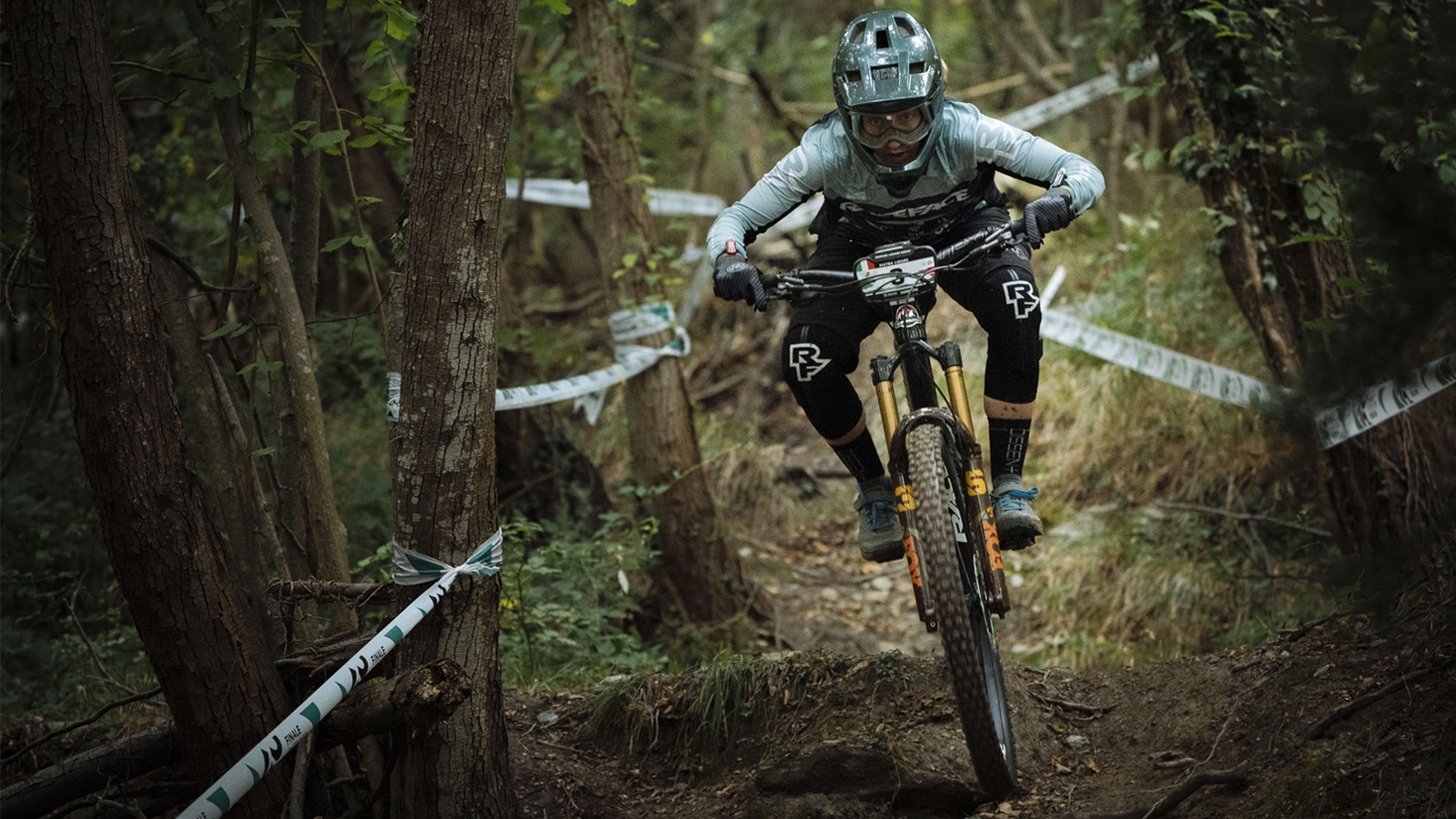
The best enduro helmets are designed for maximum protection in gravity mountain bike situations where pedaling is required as well as downhill prowess.
Enduro helmets come in open-faced, full-face and convertible styles. The full-face versions look a lot like DH helmets, but there are significant differences in design to keep them comfortable when you’re wearing them all day and putting in regular super-hard efforts on enduro MTB descents – see the FAQs at the bottom of this article for more on this.
While it’s a legal requirement for some events and riding spots, not everyone wants a permanent full-face helmet. That leaves you with the choice of – a removable chin guard that you can take off for less dangerous parts of the ride, but clip on for the crazy bits. Or you can choose an open-face helmet with no jaw protection at all, but with deeper coverage on the back of the head to reduce the chance of injury.
Our expert testers have put a range of the best enduro helmets through their paces and picked out their recommendations. Our top open-face choice is the Giro Tyrant, and our best full-face is the Specialized Gambit.
We’ve covered all the different types here and we regularly update this listing to be sure any new helmets that we rate are included and that existing helmets are re-scored to reflect any changes in the rankings.
So read on for our pick of the best enduro helmets, and if you find that maybe they're all a little hefty, you may well be interested in our guide to the best trail helmets. If you're not sure what you need, skip straight to advice on how to choose the best enduro helmets at the end of this article.
The quick list

Best open-face enduro helmet overall
Excellent, innovative and extended protection with little heat or hearing compromise.
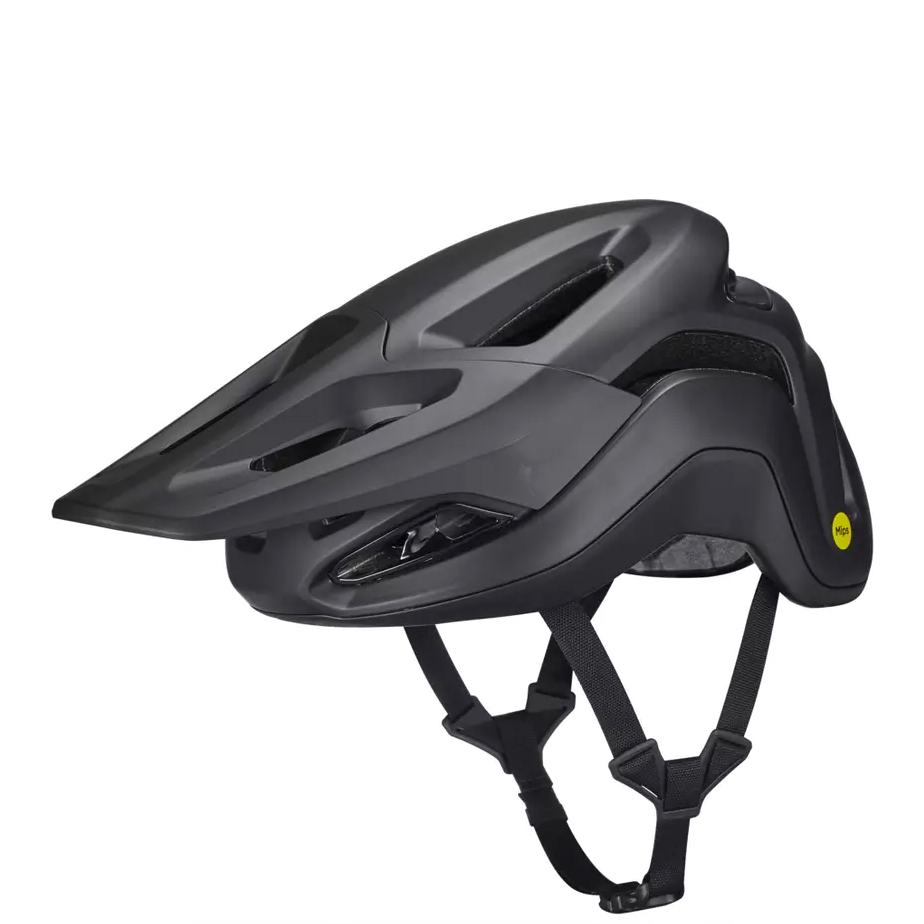
Best enduro helmet for airflow
High protection levels, impressive ventilation, neat fit and great glasses storage.
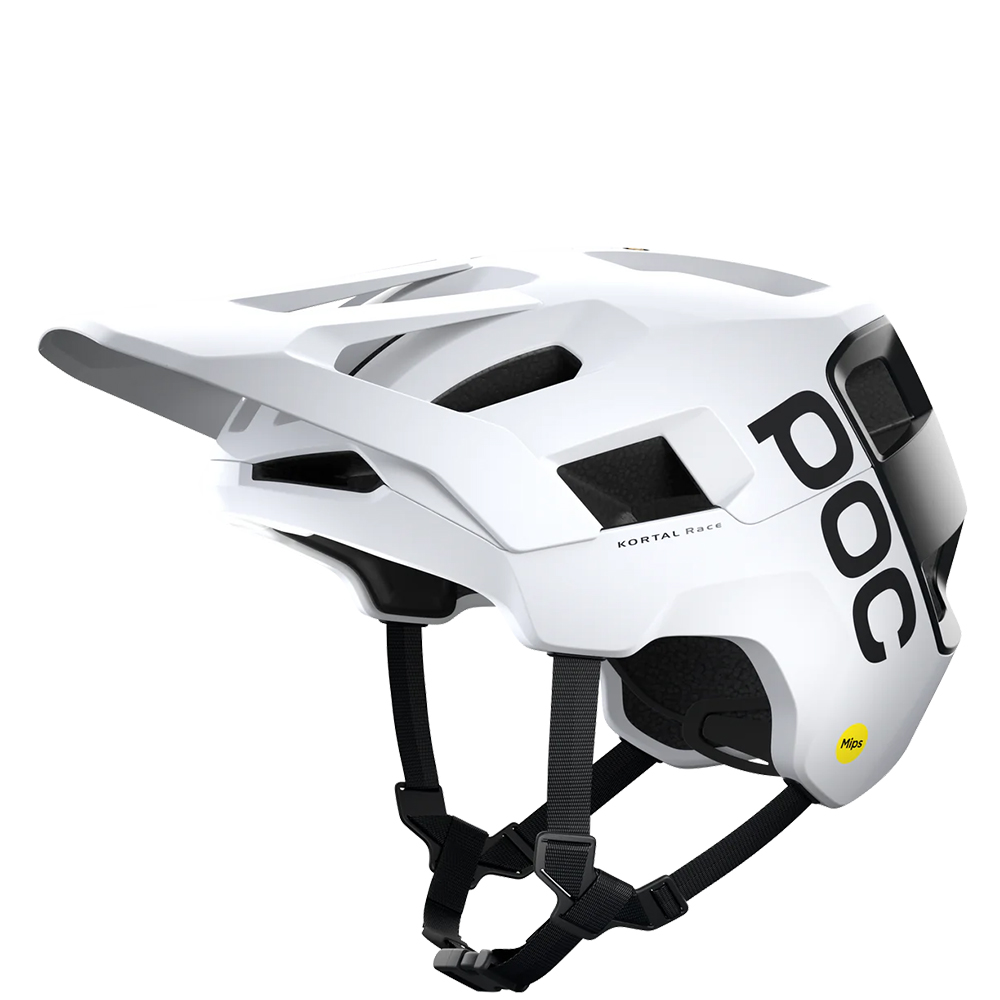
Best enduro helmet for safety tech
Packed with safety features, comfortable fit and excellent ventilation.
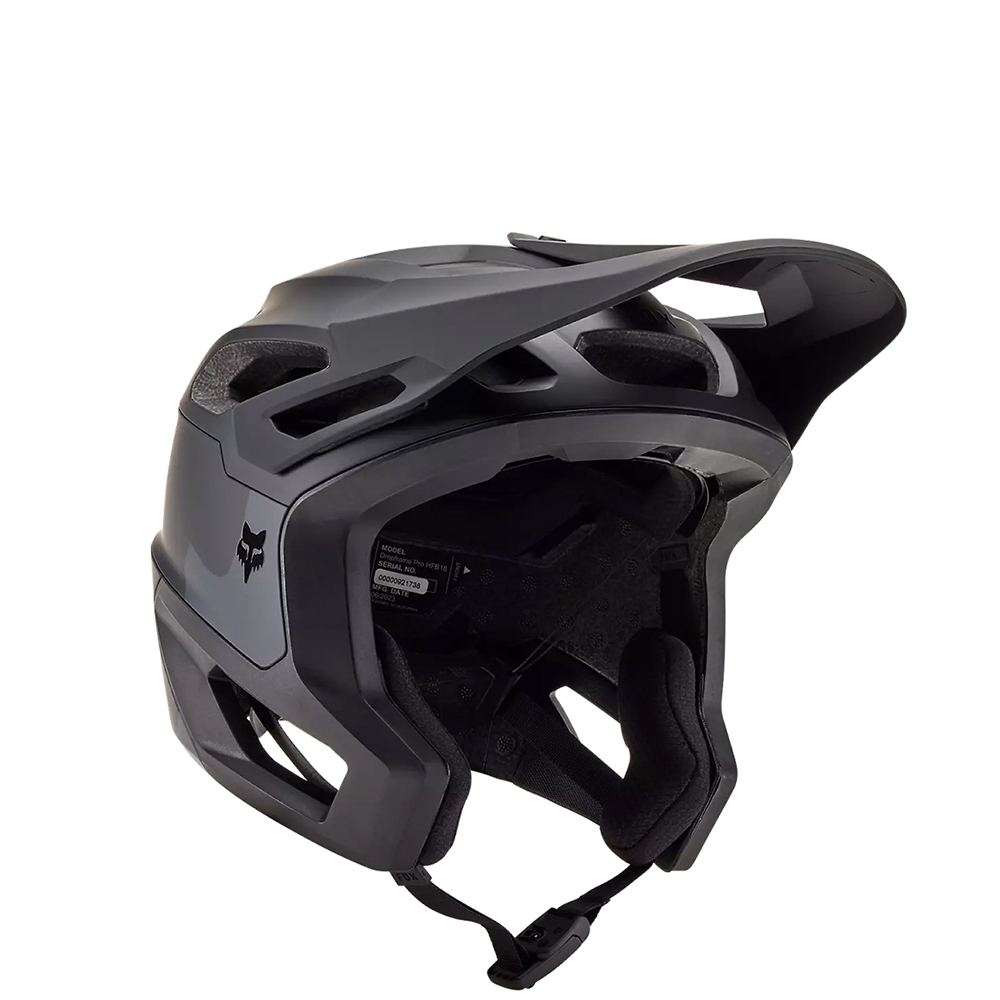
Best enduro helmet for deep coverage
Best of both worlds with enhanced protection of a full-face in an open-face helmet.
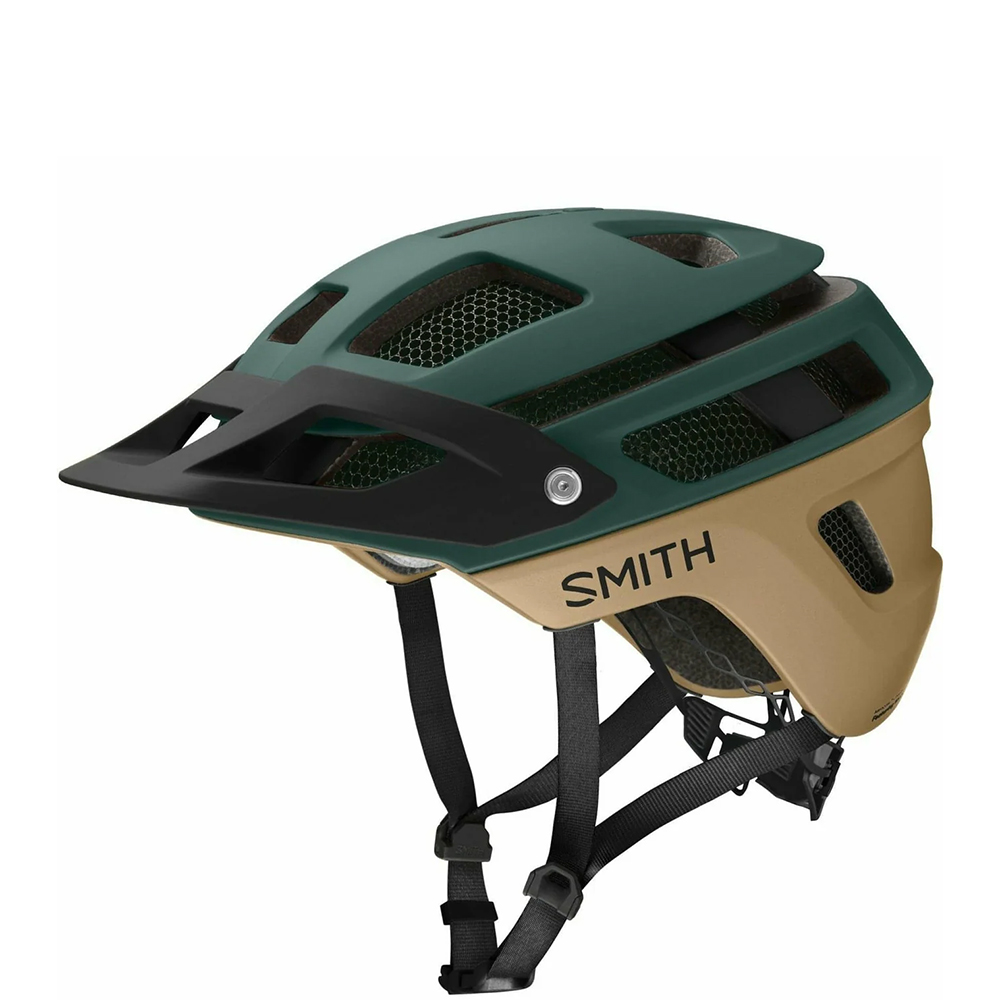
Best lightweight enduro helmet
Comfortable and light with a superb balance of ventilation and protection.
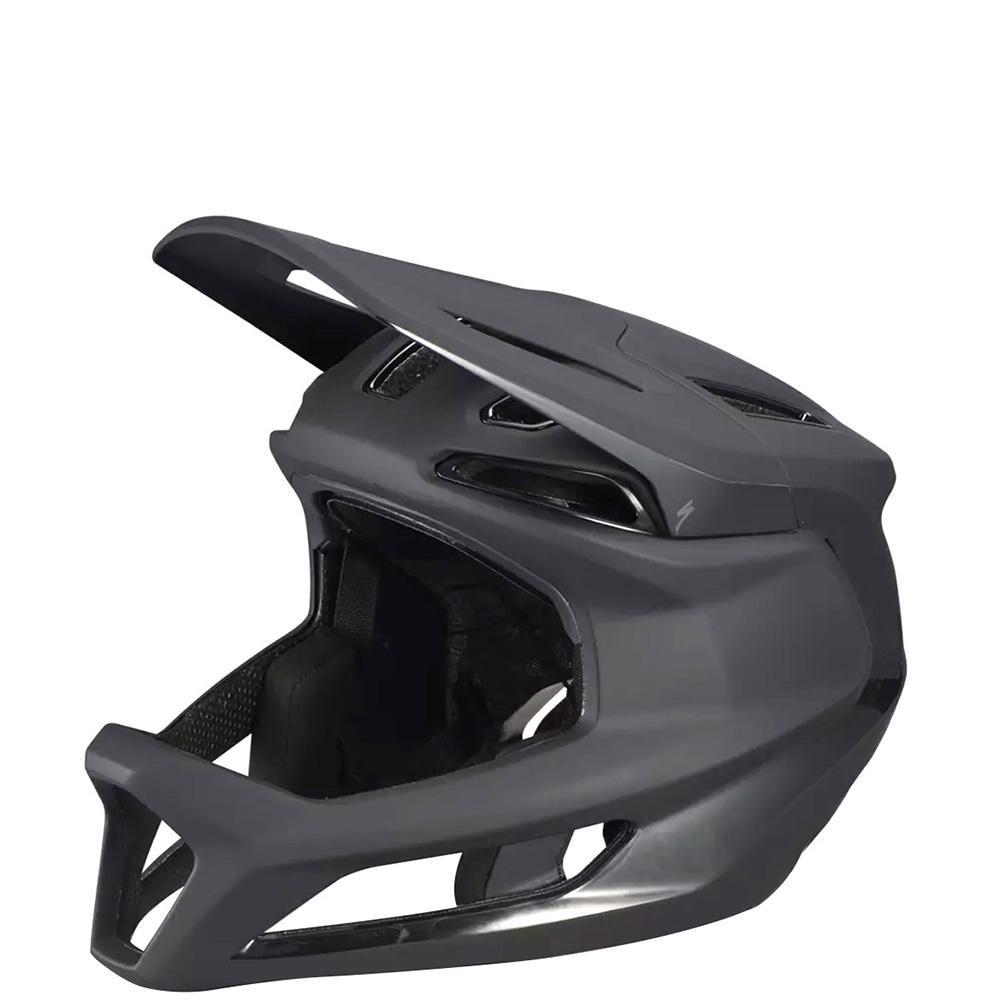
Best full-face enduro helmet overall
Full-face DH protection with the weight and fresh airflow of an open face.
See the next 4 enduro helmets ↓
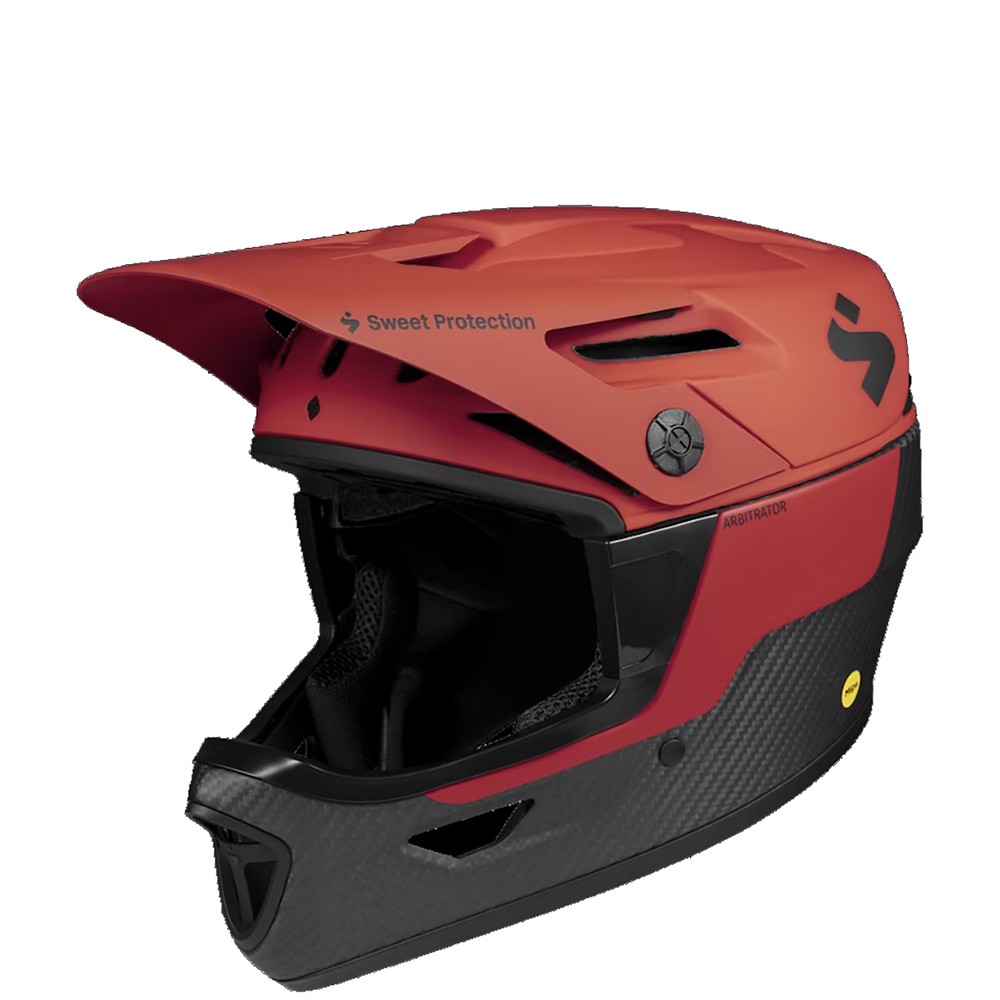
Best convertible enduro helmet
DH-certified full-face that converts to a trail helmet with its removable chin bar.
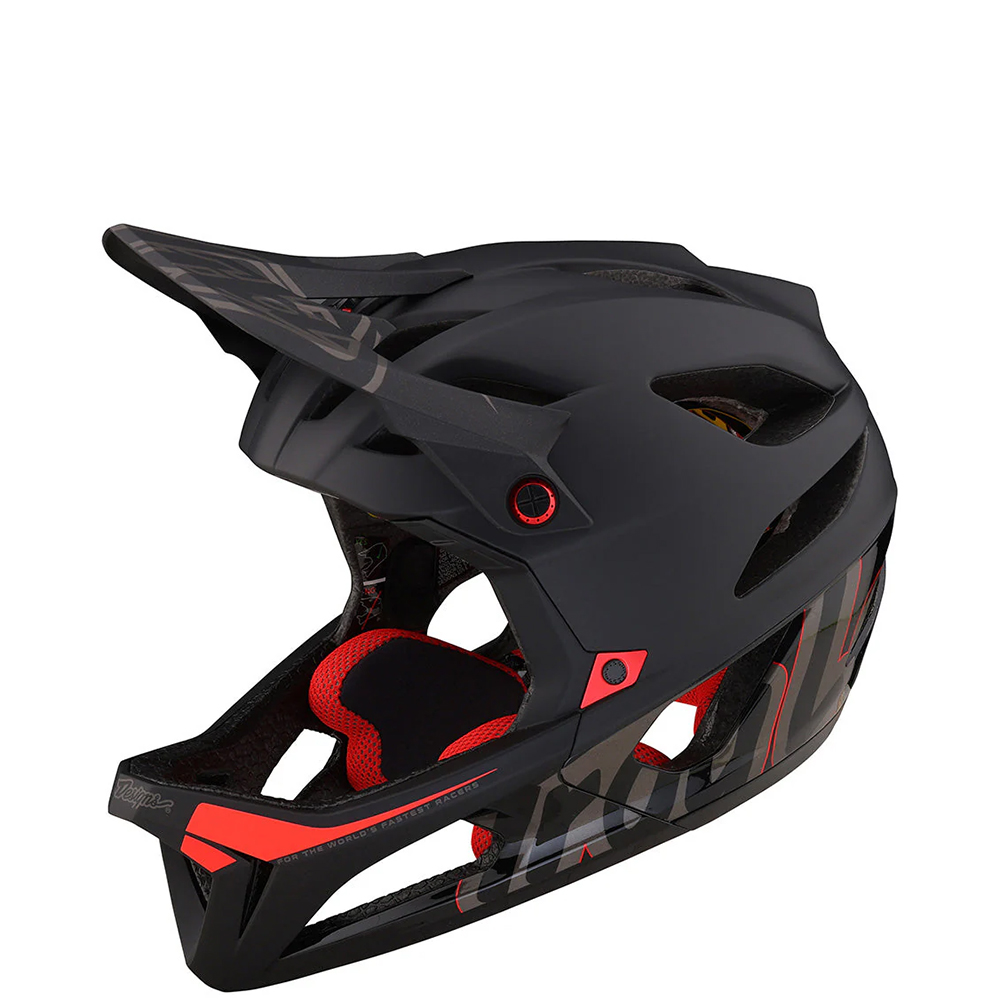
Best lightweight full-face enduro helmet
A full-face with decent protection, top-tier venting and a huge range of colors and designs.
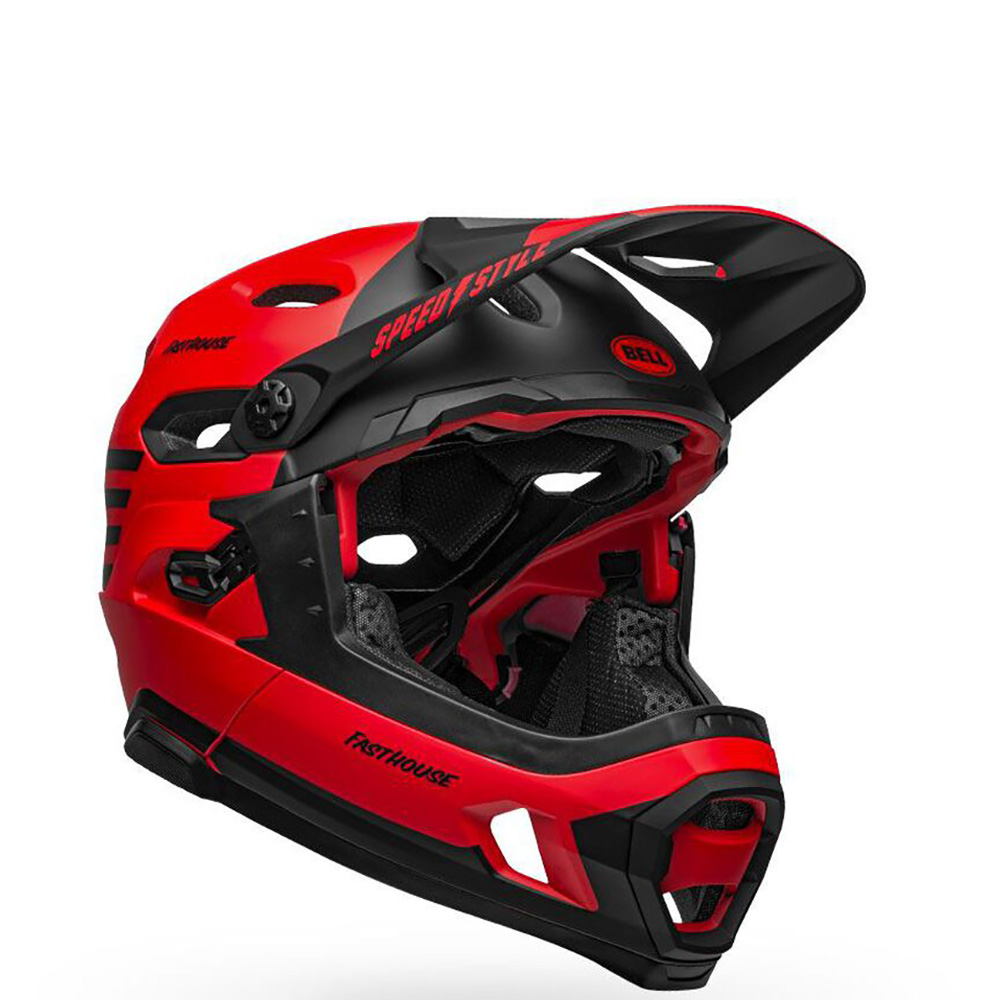
Best enduro helmet for DH protection
Top level DH protection, great fit, and with a removable chin guard.
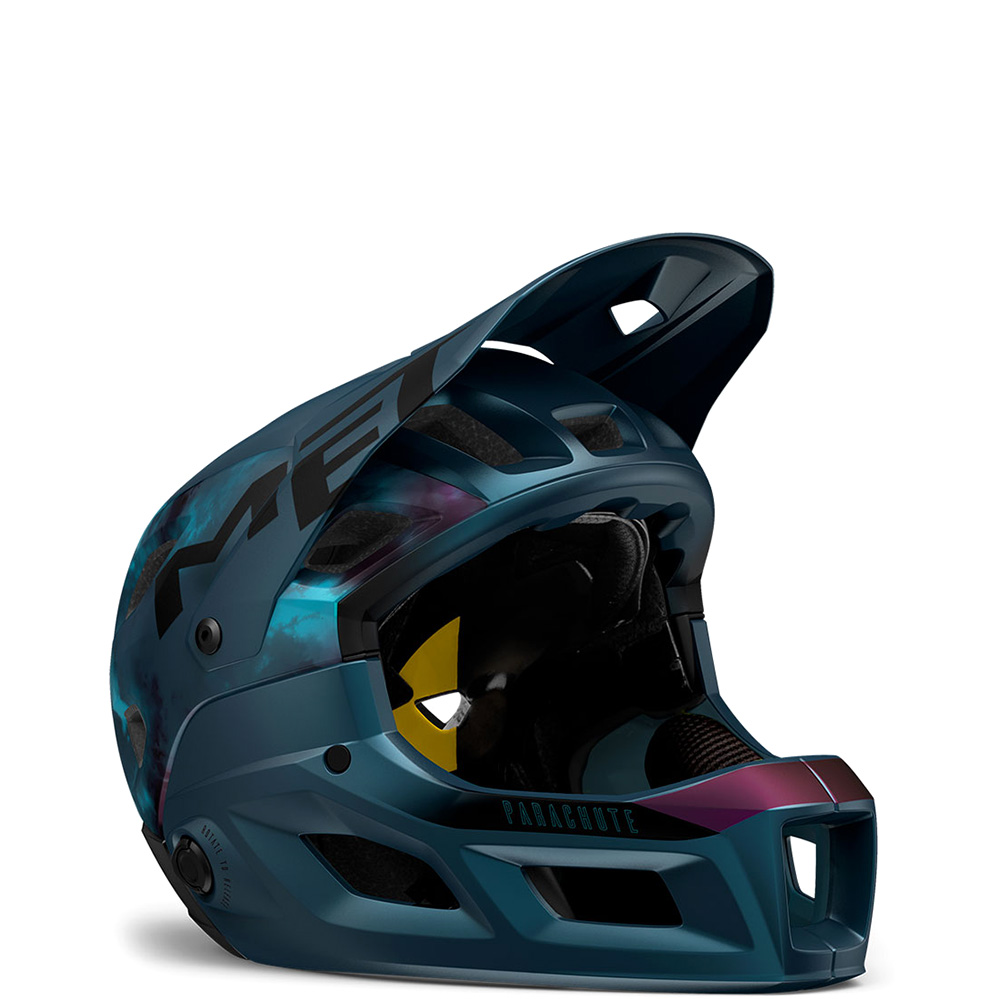
Best quick-change convertible enduro helmet
Uses an innovative magnet system for super easy chin bar attachment and removal.
Best open-face enduro helmets
Why trust BikePerfect
1. Best open-face overall
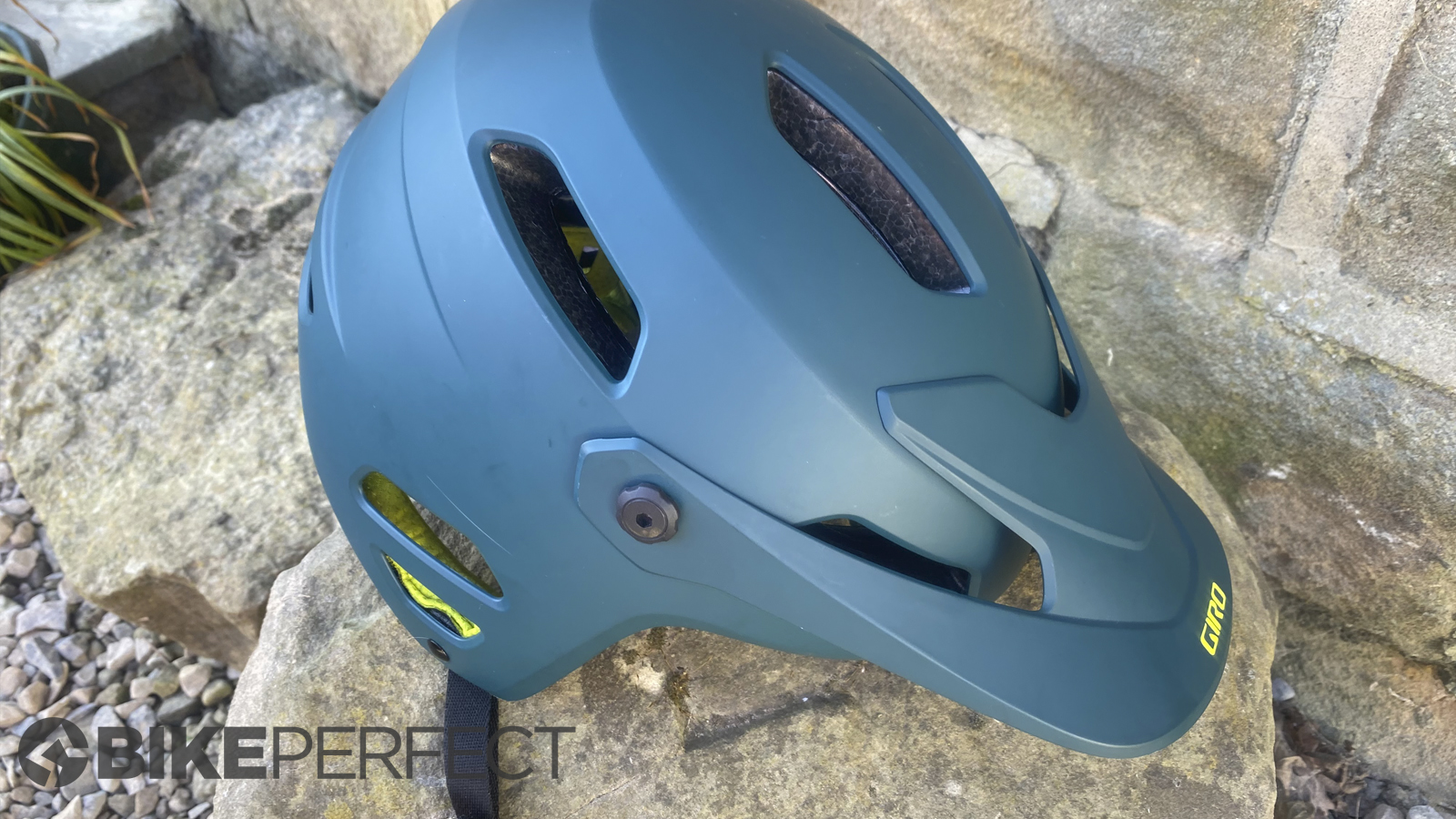
Specifications
Reasons to buy
Reasons to avoid
Giro’s Tyrant open face Enduro helmet has the maximum protection and quiet calmness available without adding a chin guard. The unique twin skin MIPS spherical design makes it relatively heavy and bulky, though.
Uniquely for an open face, the deep rear coverage of the Tyrant extends over the ears, giving the calmer, quieter vibe of a full face helmet that we think genuinely helps you stay relaxed on rowdy descents. The MIPS spherical design essentially uses two separate helmets one inside the other. That means rather than just the internal pad cradle sliding against the outer helmet like a conventional MIPS helmet, the whole outer helmet moves over the inner to dissipate brain-damaging forces.
The two pieces come complete with hardshell skins and different density EPS and EPP foam to handle likely impact loads in different areas. Extensive internal channeling links up with large outer vents and big exhaust ports to pull a surprising amount of air through over your head. There are ‘stack’ vents inside the brow to pull steam out of your goggles too. That means it stays surprisingly cool on long climbs, although it’s inevitably hotter than a less enclosed, trail style helmet.
While it can twang your ears as you pull it on, the fit is otherwise excellent with easy adjustment from the Roc Loc cradle and the visor is adjustable for angle too, making it simple to keep weather out of your eyes or find a place for your goggles on climbs.
While the MIPS Spherical design does make it slightly heavier and bulkier than other open face helmets it’s extremely well priced for the level of tech and Zen like vibe it brings to your biking.
Our reviewer Guy Kesteven summed up: "It’s rare – in fact, this is probably the first time ever – that everyone in our test team praises a helmet as unanimously as the Tyrant. Obviously it’s not for XC bike rides or hot and fast trail use, but for any situation where extra coverage and impact protection is a good idea, but you don’t want a full face this is an outstanding lid."
For full details read the Giro Tyrant review.
2. Best for airflow
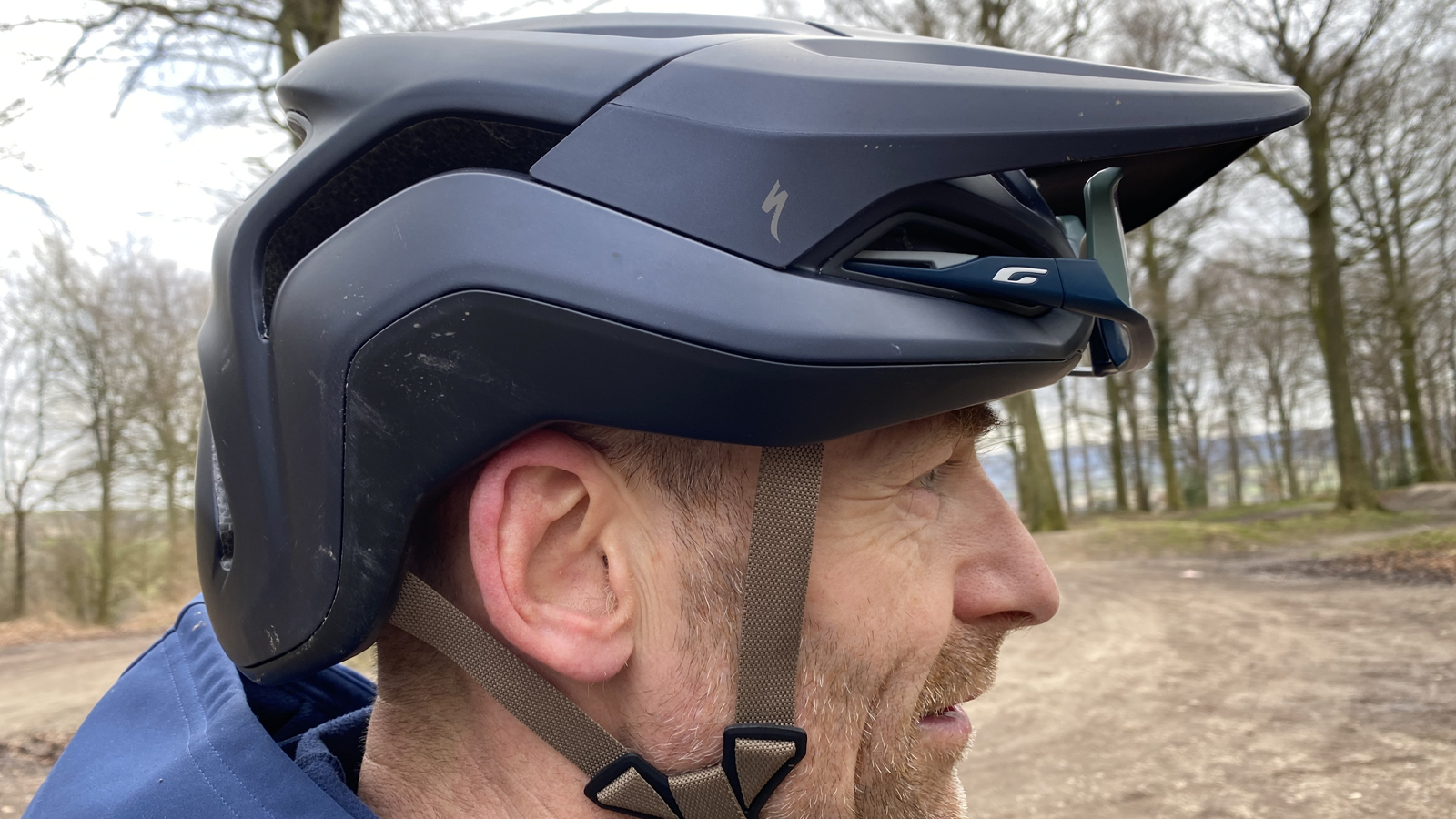
Specifications
Reasons to buy
Reasons to avoid
The Ambush 2 is the latest addition to Specialized’s totally revamped helmet range. It uses the same potentially divisive aesthetic too, but that means excellent airflow at speed, maximum safety rating from a minimal padding strategy and spectacular spectacle storage.
According to Specialized’s massively experienced helmet design “supergroup“ the Ambush is designed from the “inside out” in two distinct ways. Primarily they use FEA (Finite Element Analysis) computer impact analysis to position the multi density foams in the helmet to give a maximum five score from the Virginia Tech independent testing lab with minimum weight and bulk.
They also design the airflow through the helmet – again with CFD (Computational Fluid Dynamics) – by creating broad internal channels over the scalp and then positioning and shaping the input and exhaust vents to suit. They’ve used the same minimal “pads on elastic bands” MIPS SL system they debuted in the Gambit and Tactic helmets to remove the need for a separate airflow compromising MIPS sheet between the pads and the shell.
The 3D adjustable shell uses a dial embedded in the rear of the helmet too so it’s super easy to adjust fit and angle to suit whatever glasses / goggles you’re using. The design team also spent weeks perfecting the in-vent grippers for the arms of your glasses too, so your specs are very unlikely to rattle loose if you’re stowing them off your face. A full hardshell wrap makes it cosmetically tough and it comes in six colors to match your vibe.
The result is a light, yet max protection trail / enduro helmet with impressive cooling power if you’re moving reasonably quick. It doesn’t vent quite as well as the best in category when you’re crawling though. Also, the high, fixed-position peak is more decorative than functional when it comes to shading you from sun or rain. It leaves plenty of room for goggles or glasses underneath, though, and it won’t flip up or droop over time. It also pops off more easily than an adjustable visor and it weighs slightly less too.
Our reviewer Guy Kesteven concluded: "There are loads of deep-dish helmet options now, but the redesigned Ambush 2 definitely deserves a place right up in the rankings."
If you’re looking for a very similar vibe and the same excellent protection rating from your helmet then be sure to check out the excellent Specialized Camber which is an absolute bargain and also comes in five different shell sizes for a great fit on everyone from kids to King Kong.
For more, check out our full Specialized Ambush 2 review.
3. Best for safety tech
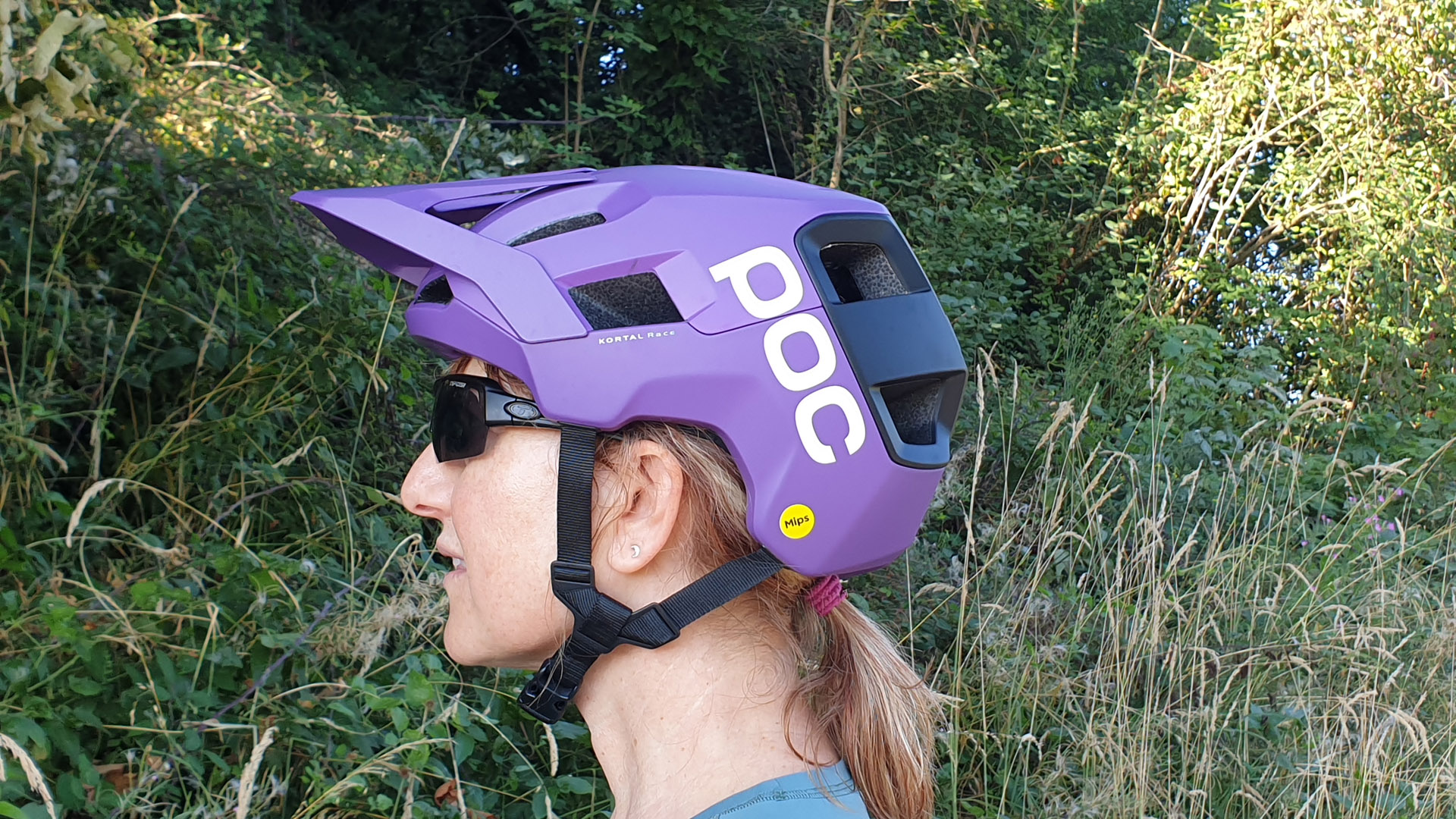
Specifications
Reasons to buy
Reasons to avoid
The Kortal is pricey but POC's newest enduro helmet comes packed with features that mean it's a top performer when you're riding the trail and when the trail is riding you. Almost every feature on the helmet has been tailored specifically for enduro riding from the extended coverage, impressively lightweight to the ventilation and peak design which takes goggle straps and storage into consideration.
However, in the unfortunate event of a crash the Kortal's features will come into play. The latest MIPS Integra system protects against rotational forces to the brain as does the peak which is designed to break away from the helmet. The built-in RECCO Reflector helps emergency services locate you and the twICEme Medical ID stores medical and emergency contact information which can be accessed immediately using NFC.
Our reviewer Shim Slade was impressed in her review, concluding: "POC’s Kortal Race MIPS is a top-quality, great-looking open-face enduro helmet that offers superb ventilation and excellent protection plus additional high-tech safety features. Add to this its extensive rear coverage, extra-high e-MTB safety certification and comfortable fit, and you’re onto a winner."
Find out more in our full POC Kortal Race MIPS review.
4. Best deep coverage
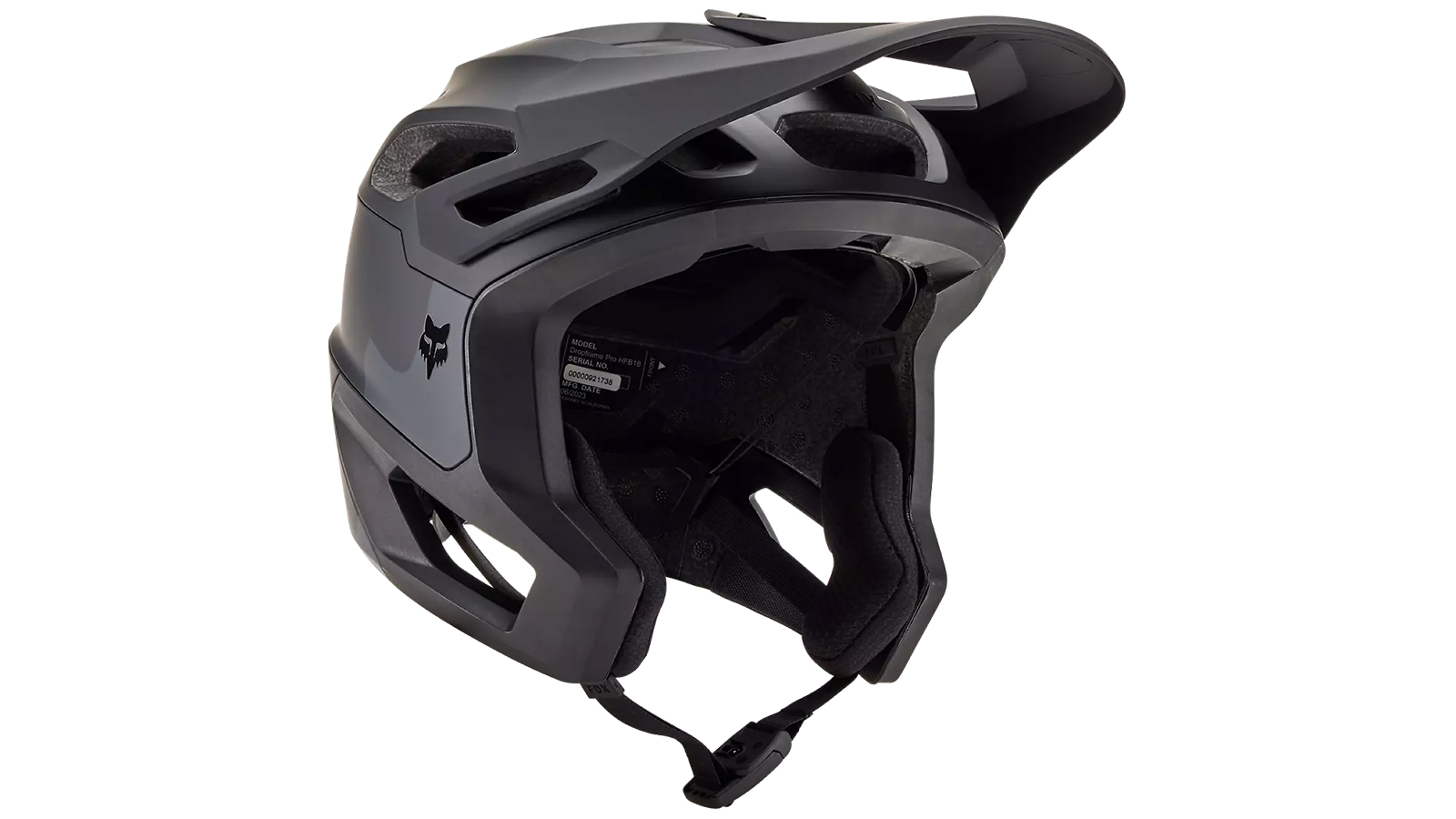
Fox Dropframe Pro
Specifications
Reasons to buy
Reasons to avoid
The Dropframe Pro is Fox’s update on the original Dropframe and aims to deliver the best of open and full-face designs. It’s an open-faced 3/4 enduro helmet, with the new Pro design giving even more coverage around the ears, jaw and back of the head. Temperature management is taken care of with the addition of more and larger ventilation channels, including new big bore front vents.
The helmet has a MIPS protection system, and fit has been improved with a new Boa adjustment, paired with a Fidlock magnetic SNAP buckle, which is a system we’ve been impressed by on Fox’s Crossframe Pro. The Boa gives a safe and secure fit and makes on-the-fly adjustments super easy.
Other useful updates to the Pro are the Ionic+ anti-microbial liner and cheek pads, which are removable and washable, and the three-position adjustable visor, which is compatible with goggles.
The Pro is a solid choice for those looking for extra protection while keeping an open-faced vibe.
5. Best lightweight

Smith Forefront 2 MIPS
Specifications
Reasons to buy
Reasons to avoid
If you’re an enduro rider that’s maybe not hitting it between the race tape the Forefront 2 helmet from Smith brings a near-perfect balance of protection and shell coverage for big climbs and gnarly descents.
Smith breaks the mold and blends traditional EPS with a unique looking and super high impact absorbing Koroyd construction. Koroyd is a series of honeycomb sections of thermally welded straw-like tubes that offer protection from direct and angulated impacts.
At 374g it’s light too so if you are an all-day epic sort of rider the helmet should be comfortable for the full ride. If you’re a Smith goggles or glasses user there are also specific ventilation channels to help maintain fog-free vision with these optics.
Ventilation through the Koroyd honeycomb is through radiation and micro exhaust flow over the outer ends rather than airflow directly over the scalp. This means they can be hotter than a conventional helmet when working hard and you’ll often feel a sudden heat release when you stop at the top. The cells can also fill with water in heavy rain which makes the helmet heavy and reduces ventilation further.
Best full-face/convertible enduro helmets
6. Best full-face overall

Specifications
Reasons to buy
Reasons to avoid
The distinctive looks of the Gambit are only possible because of the carbon fiber-reinforced shell that allows big holes and gaps without compromising on strength. This includes a massive mouth vent and big cheek slots for a face full of fresh air and no heavy breathing halitosis.
Big front and flank vents lead into high-volume channels inside and high and low exhaust vents so the wind whips over your skull at speed. Five different density pieces of very thin EPS foam mean it’s smaller in external size than most full face lids and the padding is minimalist too.
While you get two chunky switchable chin pieces to keep your jaw padded in a slam the rest of the padding is more like a road / XC lid. The “MIPS SL” rotation protection layer dodges an internal skin by putting the pads themselves on stretchy elastic band mounts. A minimalist trail / XC-style cradle with clip lock buckle secures the helmet on your head via vertical slider adjustment and a dial embedded in the rear of the shell. This keeps the Gambit both airy inside and super light at just over 600g for our medium sample, so it’s no strain on your neck.
The only potential grumble is the fixed visor that’s so high it doesn’t provide any weather protection. It’s light, snaps off easily in a crash, won’t flap out of position and leaves plenty of room for goggles though so it’s swings and roundabouts for that issue.
It’s definitely not enough to stop it going straight to the top of our full face enduro helmet chart anyway and if you want an open face lid Specialized’s new Ambush S shares a lot of the same design features.
Our reviewer Guy Kesteven reported: "The bottom line is that it delivers full DH protection while venting, breathing and weighing almost the same as an open-face helmet. That means that while most full-face helmets I get to test end up gathering dust after the appraisal period I regularly grab the Gambit for even slightly risky rides."
For more info on why we gave this helmet five stars, read our full Specialized Gambit review.
7. Best convertible

Sweet Protection Arbitrator
Specifications
Reasons to buy
Reasons to avoid
Helmets that are convertible between open face and full-face are nothing new, but the Arbitrator from Scandinavian brand Sweet Protection feels like it brings a whole new meaning to the dual-use statement.
When in full-face mode the Arbitrator far exceeds full DH specification and closes with a double D-lock fastener, yet release the clip at the rear of the helmet and the full carbon fiber chin guard detaches, a normal buckle closure untucks, leaving you with a traditional looking tech-packed trail helmet. Whilst we wouldn’t necessarily carry the chin guard around on the majority of our rides the pure versatility of a true best of both worlds convertible helmet makes a ton of sense if you’re wanting one helmet that will allow you to hit the bike park over the weekend before blasting the local trail ride on Monday.
Sweet prioritizes protection over everything else and, as a result, the Arbitrator features Sweet’s perfected multi-density EPS liner, an industry-leading MIPS liner and an outer shell that has been specially tuned to deal with a huge variety of impacts.
Ventilation hasn’t been missed in the mass levels of protection either and the Arbitrator features Sweet protection’s STACC venting which allows for cool air to be transferred over the temples without any compromise to the overall protection.
It’s by no means cheap but the entire Arbitrator package is a ton cheaper than buying both a full-face and open-face helmet separately too, especially considering the world-class protection features.
8. Best lightweight full-face
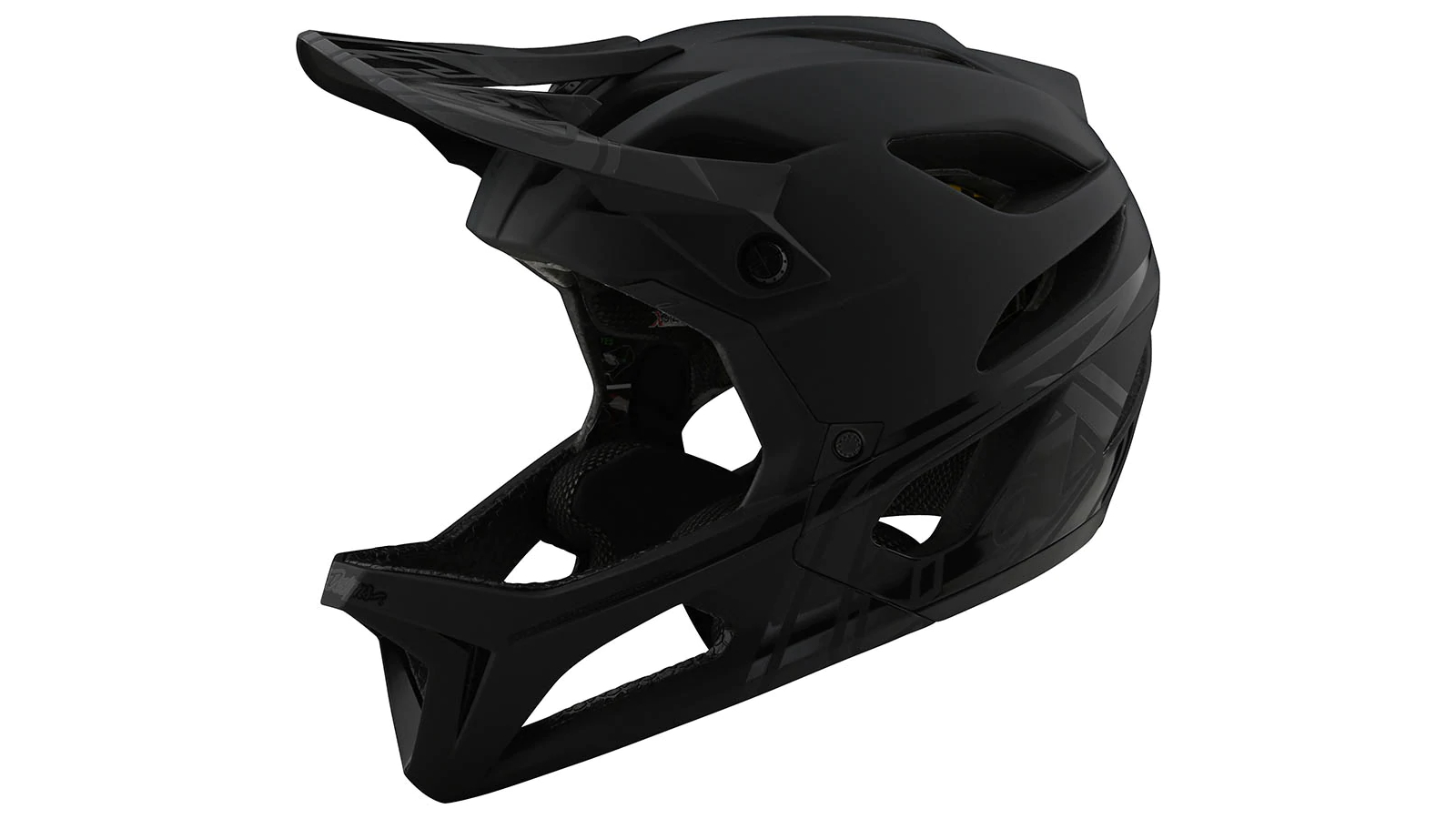
Troy Lee Designs Stage MIPS
Specifications
Reasons to buy
Reasons to avoid
Despite being a fully fixed, full-face helmet the Stage will keep you cool, regardless of whether you're sweating it out on the climbs or pushing the limits on the descents. This is thanks to the 11 large high flow intake vents and 14 open exhaust ports constantly keeping things fresh, making you almost forget you’re wearing a full face altogether. Not totally though, as the additional protection over an open face lid encourages you to open the throttle that fraction more, especially in a race scenario.
It’s a combination of EPP and EPS foams that keep you safe should the worst happen and these two layers team together and disperse energy regardless of the impact speed. The latest MIPS liner is also integrated to make sure every protection base is covered.
Due to its light weight, the Stage is a dream to wear and, in usual Troy Lee Designs fashion, there’s a raft of colors and artistic designs to choose from. It’s by no means cheap but with a flawless fit, a technology-packed design and a color scheme to suit nearly any style the Stage leaves you wanting no more.
9. Best for DH protection

Bell Super DH Spherical MIPS
Specifications
Reasons to buy
Reasons to avoid
Bell is certainly no stranger to the convertible helmet party, but the Super DH brings protection to a whole new level with its ASTM 1952 safety standard. This certification means it’s ready to tackle everything from elite-level DH racing with the chin guard attached to big backcountry epics with it removed.
What makes the Super DH so well suited to enduro is how easy the transformation between the two guises is and by following a simple process the chin piece can be removed and installed within a few reassuring clicks. The installation can take a little bit of persistence to perfect but once mastered it can easily be clipped into place right before you drop in. When in open face mode we find the chin guard relatively easy to carry too, and due to its ‘U-shape’ design it can be hooked onto hip pack waistband with little to no interference when pedaling.
Internally the Super DH sees the ball and socket like MIPS spherical rotational impact protection system which sits inside Bell’s specially developed fusion in-mold polycarbonate shell – a process that bonds the outer shell onto the EPS foam liner to create a sturdier helmet.
The price is high, but it’s reflected in the overall build quality and bespoke feeling comfort levels. The pads Bell has used cushion beautifully against your head and do a sterling job of wicking sweat which when paired with the hyper-efficient venting system allows you to thrash from dawn to dusk in pure comfort.
10. Best quick-change convertible

MET Parachute MCR MIPS
Specifications
Reasons to buy
Reasons to avoid
Met was one of the first brands to hit the market with a convertible full-face helmet, luckily the modern Parachute MCR has evolved into a very different beast. For a start, the Parachute MCR is ASTM F-1952-15/F-2032-15 certified (including the chin bar), lined with MIPS and a BOA-FS1 fit system with swappable chin bar pads.
The Parachute stands out from the other convertible full-face helmets in that it uses magnets to locate and attach the chin bar. Developed with Fidlock, a brand that specializes in all sorts of magnetic fixtures, MCR stands for Magnetic Chinbar Release. The magnets help locate the chin bar into the attachment points before using handles on each side to lock it in place. Removal is simple as well, turning both handles to disconnect making it easy to whip off before climbing. Fidlock also takes care of the chin buckle as well.
There are a load of features beyond the chin bar too. The visor is flexible to limit damage in a crash has enough adjustability to store goggles underneath. Met has kitted the Parachute out with 21 vents which feature channeling throughout to help ventilation. It's not cheap though, retailing for considerably more than the other helmets in this guide.
How to choose the best enduro helmets
How does a full-face enduro helmet differ from a DH version?
First, they need to be light enough to stop your neck getting too tired – not just from wearing the helmet all day, but the repeated high-G impacts from long, rough descents on a bike with less suspension travel than a full DH rig. Also, because the climbs and descents are long and the level of intensity super high, you also want the best ventilation possible. Finally, with multiple courses over a day or a whole weekend, you can’t remember every detail of an enduro, so having more open vision is also a help compared to the more rehearsed runs of DH.
What are the best enduro helmets made from?
The best enduro helmets use an EPS liner which is often made up of multiple foam densities in order to tune different sections of the helmet for the most common impacts. Due to how well EPS foam absorbs impacts it’s the best material for protecting your precious head should the worst happen.
Above the EPS foam is the helmet's outer shell which is the first point of contact in a collision; this means it plays an integral part in both preventing damage to the EPS foam and dealing with the initial impact. The shell can also be made up of separate sections which again means different areas of the helmet can be tailored to better suit different types of impacts.
Inside most helmets, we see an adjustable cage and a series of pads that have the job of providing a secure and comfortable fit.
How should a mountain bike helmet fit?
Arguably, the fit is the most important element to get right when choosing a new lid and having a helmet that fits correctly is essential in ensuring it’ll effectively protect your head in the event of a crash. Even a helmet packing all of the latest and safest helmet technology, if poorly fitting, will hugely reduce its chances of providing the required levels of protection. While most brands offer a well thought out size guide you still can’t beat going into a proper bike shop and trying on a selection of different helmets to see which brand and model fits your skull shape best. The best-fitting helmet for you is also likely to offer the best all-day comfort too – the best helmets make you forget you’re wearing them; something that’s important during a full day's racing/riding.
Do enduro helmets need ventilation?
Hitting the ventilation sweet spot isn’t easy, especially in helmets that are designed to be worn for both long slow-speed draggy climbs and testing DH-graded descents. Adding tons of vents is a good way of creating good airflow and exhausting hot air, but whilst this may be good for road and XC riding where the crashing consequences aren’t quite as high, it isn’t the safest option for enduro where the terrain is gnarlier and the impacts are potentially more powerful. Enduro helmets need to maximize shell coverage so vents need to be scientifically placed to still carry cool air through whilst still efficiently disbursing hot air, all without compromising on protection levels.
What is MIPS?
Featured on nearly all mid-high range mountain bike helmets now is some form of rotational impact protection system. MIPS is the most commonly used but other similar systems are available all with the aim of transferring rotation impacts away from the brain and significantly reducing the chances of brain tissue injuries, such as concussion. The best MIPS mountain bike helmets are so widely available we don’t see why you’d opt for a lid without one.
When should you replace your helmet?
Helmets are good for one crash and one crash only. Even if you cannot see any damage, if your helmet has experienced some form of impact it’s time to purchase a replacement – it’s simply not worth the risk. Some brands even offer a crash replacement scheme that providing you have the original receipt that allows you to get a new helmet at a reduced rate, something that’s worth looking into if you’re accident-prone.
Do you need a full face for enduro?
With the regular high speeds and general downhill focus, this is often a highly debated decision among enduro riders. Ultimately, unless certain event rules dictate otherwise there is no right or wrong answer and the decision really comes down to personal preference. Full-face helmets, even the latest generation of lightweight options, are still inevitably heavier than most of the best half-shell helmets, run hotter and limit visibility at the trade-off of extra protection. Open-face helmets aimed at enduro tend to have more coverage than most trail lids, vent well and provide great trail visibility but do leave you feeling more vulnerable when the gnar levels ramp.
Luckily over the past few seasons, we have seen a new breed of convertible helmets come to the market which essentially offers the best of both worlds – unclip and remove the chain guard for climbing or long stage transitions and simply re-install when the trail begins to point down. These are a great solution but they’re not without their problems. If you’re also using it as a downhill helmet you need to make sure the chin-bar attachment meets the necessary certifications too, as some options are only rated for trail riding.
Why do enduro helmets have visors?
Visors are really useful, and the best ones are adjustable to keep them out of your line of sight when riding. Visors that flip right up also create a space to stow your goggles when you’re not using them, too.
How we test enduro helmets
All the helmets we've tested here have been put through several hours of riding in a range of different weathers and riding conditions, and tried them out for the most challenging enduro descents, as well as long, hot climbs. We've assessed them for safety features, coverage, ventilation, comfort, convertibility, optics storage and more.
Meet the testers

Guy's been testing and writing about mountain bikes since the early nineties and we're betting than he's tested more MTB helmets than anyone else in the UK. He's no stranger to enduro racing either and has raced in a multitude of different events.

Shim first discovered MTB in the mid-nineties. She started working as a bike journalist nearly 20 years ago and has written for many bike-related magazines and websites since then.

Jim Bland is a product tester and World Cup downhill mechanic based in North Yorkshire, England, but working Worldwide. Jim’s chosen riding genre is hard to pinpoint and regularly varies from e-bike-assisted shuttle runs one day to cutting downcountry laps the next. Always on the hunt for the perfect setup, Jim will always be found comprehensively testing kit with World Cup racing levels of detail. His ultimate day out includes an alpine loam trail, blazing sunshine, and some fresh kit to test.
Rides: Santa Cruz Hightower, Santa Cruz v10, Specialized Kenevo.
Height: 170cm
Weight: 64kg
- Guy KestevenTechnical-Editor-at-Large
